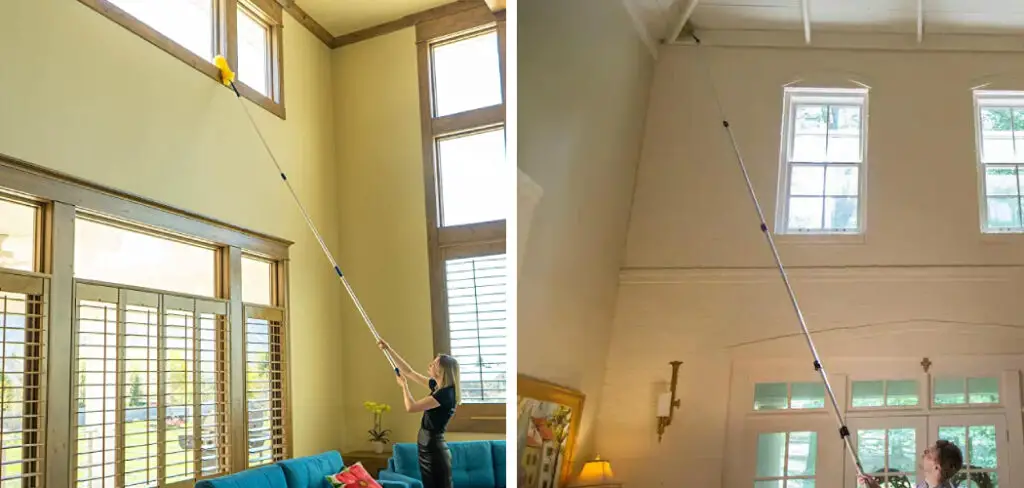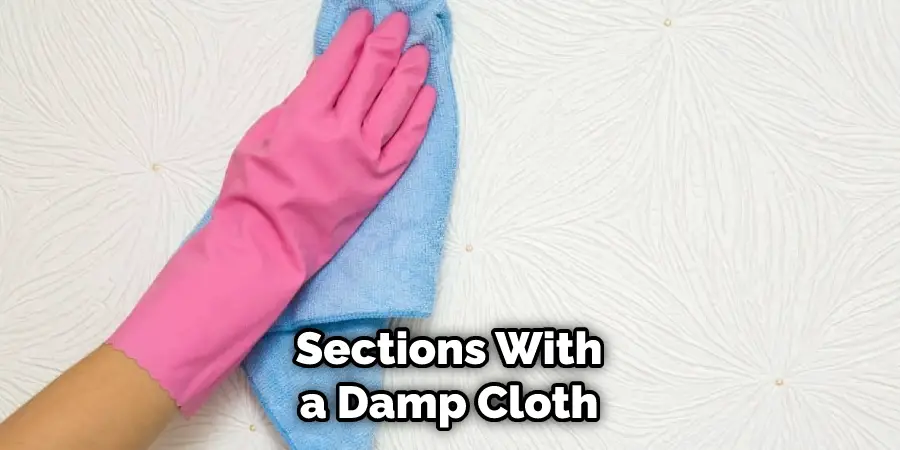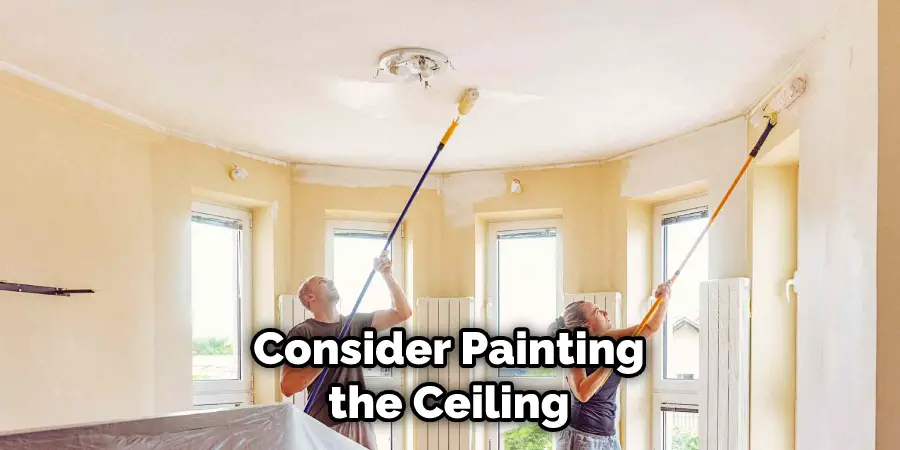Have you ever looked up at a cathedral ceiling in awe of its intricate design and beauty? Cathedral ceilings often make a room look more luxurious, bright, and open. It’s no wonder why so many property owners are opting to install them in their living spaces. However, cleaning those high-up corners can be tricky!

To help make the cleaning process smoother for you and your family, we put together this comprehensive guide on how to clean cathedral ceilings quickly and effectively. Keep reading to find out insider tips from professionals on what tools you need, how to target specific areas with ease, common mistakes people make when tackling this task—and more!
What Is the Best Cleaner for Ceilings?
When it comes to cleaning cathedral ceilings, the best cleaner is one that is specifically designed for this type of surface. Look for a cleaner that is formulated specifically for vaulted or cathedral ceilings. This will ensure the product won’t damage or discolor the ceiling’s finish. Additionally, make sure to read and follow all safety instructions on the label before use.
It may also be beneficial to purchase a microfiber cloth or mop head specifically designed for cleaning ceilings. These materials are gentle, yet effective at lifting dirt and dust without any risk of scratching or damaging delicate surfaces. When using a cleaner, dampen your microfiber cloth first before applying cleaner so you don’t oversaturate the ceiling with liquid.
Once you have the right cleaner and materials, it’s time to start cleaning. Start by dusting first with a microfiber cloth or duster. This will help lift up any loose dirt or debris that may have built up on your cathedral ceiling over time.
After you’ve finished dusting, spray your cleaner onto the ceiling in a light mist, making sure not to oversaturate any area. Wipe down the ceiling with a dampened microfiber cloth until all of the dirt is lifted away.
Finally, once you’ve wiped down your cathedral ceilings with cleaners and water, it’s important to dry the surface thoroughly. Now that you know what is the best cleaner for cathedral ceilings, you can be sure that your cleaning process will be safe and effective every time.
With regular dusting and light washing using the right cleaners and materials, you can enjoy your beautiful vaulted ceilings for years to come.
10 Methods How to Clean Cathedral Ceilings
1. Use a Ladder to Reach the Ceiling:
Make sure to use a ladder that has non-slip safety features so that you can reach the ceiling safely. If you are cleaning a high ceiling, consider investing in an extension ladder or a step ladder with adjustable heights.

However, if you have a lower ceiling, an A-frame ladder should do just fine. While on the ladder, make sure to have a spotter nearby to help ensure your safety. Although they can be a bit unwieldy, ladders are essential for cleaning cathedral ceilings.
2. Vacuum or Dust the Ceiling:
Use a vacuum hose attachment to remove dust and debris from the surface of the ceiling. If necessary, use a duster with an extension handle to clean hard-to-reach areas. Alternatively, you may use a microfiber cloth to wipe down the ceiling. Start at the top center of the cathedral ceiling and work your way outwards in a circular motion.
This will help ensure that any dust and debris are removed evenly. Be sure to clean the ceiling fan blades and light fixtures while you are up there. Although it may take some time, this step is important for removing dust and dirt that could interfere with the painting process.
3. Spot Clean Stains:
Test any cleaning products on a small, hidden area before using it on the whole ceiling. Start by applying a light amount of cleaner onto a soft cloth and slowly move in circular motions until the stain is gone. Repeat as needed.
Be sure to use a ladder or an adjustable ceiling cleaner like the Eufy Hightower to help you reach any hard-to-clean areas. If a cleaning product is not working, use warm water and soap to clean the stain. To make the cleaning process easier, use a soft-bristled brush or an upholstery tool with a vacuum cleaner to remove dirt and dust particles.
4. Remove Cobwebs:
Use an angled broom handle or long stick with cotton swabs attached to it to remove cobwebs from the corners of the ceiling. Start at the highest points of the ceiling and work your way down in a systematic manner. Make sure to check all nooks, crannies, and corners. To make sure you don’t miss any cobwebs, use a flashlight to scan the ceiling.
You may also need to use a ladder or step stool to reach the higher parts of the ceiling. While cleaning the cobwebs, be mindful of any electrical outlets or cables that may be attached to the ceiling.
5. Wash Down the Ceiling:

If the ceiling is made from a material that can be washed, such as wood or vinyl boards, use a mild detergent and warm water solution to clean off any dirt or dust. Wipe down in small sections with a damp cloth and then dry immediately with another cloth. This will help keep the material free from discoloration or damage. For textured ceilings, use a soft brush attachment on your vacuum cleaner to gently remove any dirt or dust without causing damage.
For ceilings with a lot of buildups, you may need to use an old toothbrush in hard-to-reach areas. Again, make sure to dry promptly after cleaning. Finally, check for any signs of mold or mildew and treat them appropriately if found. With proper care and regular cleaning, your cathedral ceiling will stay looking great for years to come!
6. Clean Light Fixtures:
Remove light fixtures from the ceiling and clean them using an appropriate cleaning product for their particular material/finish (for example, brass cleaner for brass fixtures). Clean the walls around the fixtures to ensure that any dirt or dust is removed.

Once clean, use a mild soap and warm water to clean away any residue left behind. Dry the fixtures off with a soft cloth before re-attaching them to the ceiling. Be sure to turn off the electricity at the main circuit breaker before attempting to remove any light fixtures.
7. Use Mold Removal Products:
If your cathedral ceilings are experiencing mold growth, use special products designed specifically to remove mold and mildew on ceilings. Make sure to follow the product instructions carefully and wear protective masks and clothing as necessary.
If you are unsure about how to use a mold removal product, you can always contact a professional to help. Make sure to use the product in a well-ventilated area, as the fumes can be dangerous if inhaled. Repeat the process until all traces of mold are gone.
8. Use a Pressure Washer:
If the ceiling can safely handle it, use a pressure washer to clean off larger areas of dirt and debris. You may need additional nozzles or attachments for different tasks. Make sure to read the instructions very carefully before operating a pressure washer.
For example, you should not use a pressure washer on delicate materials like wood or drywall. Use a slow, steady pressure and never spray directly up at the ceiling – instead, aim it slightly downward and move it in a circular motion. When finished, allow the ceiling to dry completely before continuing your cleaning process.
9. Paint the Ceiling:
Once all other cleaning methods have been applied, you may consider painting the ceiling for extra protection against future spills or staining. Choose an appropriate paint color that will complement your decor and accentuate the cathedral-style of the ceilings. To paint, use a roller or brush and make sure to cover any visible stains.

Start at the corners of the ceiling and work your way outward in a sweeping motion. Use long strokes to create even, consistent coverage of the paint. Allow the paint to dry completely before continuing with further cleaning methods or decorating the room.
10. Hire a Professional Cleaner:
For particularly difficult stains or build-up on your cathedral ceilings, hiring a professional cleaner is often worth the investment in order to get them cleaned correctly and efficiently. Professional cleaners also have access to a wide range of cleaning products and tools that can help to make the job easier.
Be sure to research local professional cleaners in your area to find one that is experienced in cleaning cathedral ceilings. Ultimately, having a professional cleaner may be the best way to ensure your cathedral ceiling looks as good as new.
Conclusion
Although it’s no easy feat, staying organized and well-prepared will put you several steps ahead in the process of tackling this daunting task. Taking on your next cathedral ceiling clean with confidence will ensure that your end result is nothing short of terrific!
Be sure to bookmark this page and come back when you need advice on how to clean cathedral ceilings.

